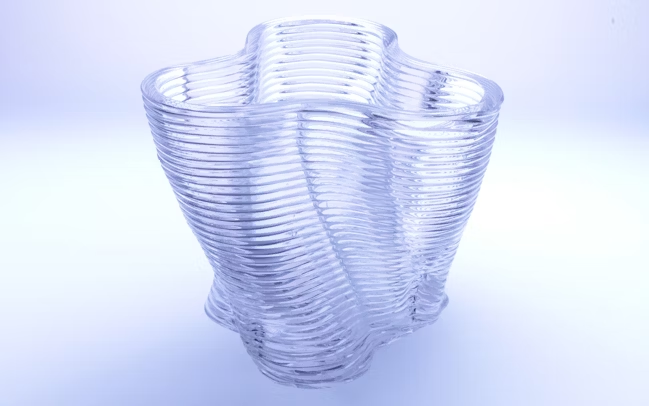GLASS I

Glass column prototypes
Research team: John Klein, Michael Stern, Markus Kayser, Chikara Inamura, Giorgia Franchin, Shreya Dave, Daniel Lizardo, Peter Houk. Prof. Neri Oxman
Position
Ancient yet modern, enclosing yet invisible, glass was first created in Mesopotamia and Ancient Egypt 4,500 years ago. Precise recipes for its production - the chemistry and techniques - often remain closely guarded secrets. Glass can be molded, formed, blown, plated or sintered; its formal qualities are closely tied to techniques used for its formation.
From the discovery of core-forming process for bead-making in ancient Egypt, through the invention of the metal blow pipe during Roman times, to the modern industrial Pilkington process for making large-scale flat glass; each new breakthrough in glass technology occurred as a result of prolonged experimentation and ingenuity, and has given rise to a new universe of possibilities for uses of the material..
Process
G3DP is an additive manufacturing platform designed to print optically transparent glass. The tunability enabled by geometrical and optical variation driven by form, transparency and color variation can drive, limit or control light transmission, reflection and refraction, and therefore carries significant implications for all things glass.
The project synthesizes modern technologies with age-old established glass tools and technologies to produce novel glass structures with numerous potential applications. We unveil a first of its kind optically transparent glass printing process called G3DP.
Extrusion Temperature in Celsius
The platform is based on a dual heated chamber (fn-6) concept. The upper chamber acts as a Kiln Cartridge while the lower chamber serves to anneal the structures.
The Kiln Cartridge operates at approximately 1900°F and can (fn-6) contain sufficient material to build a single architectural component. The molten material gets funneled through an alumina-zirconia-silica nozzle.
Credits
Collaborators: Mary Ann Babula, P.T. Brun, Jeremy Flower, Wyss Institute at Harvard University, Rubix Composites, Skutt Kilns, The Glass Art Society, Center for Bits and Atoms, MIT Edgerton Center, MIT Central Machine Shop, MIT Mechanical Engineering Department, MIT Glass Lab, MIT Media Lab








